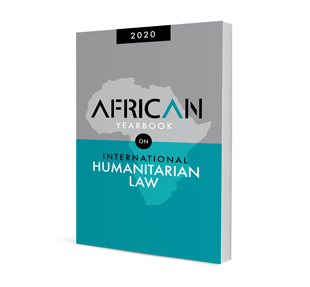
External and internal common legal representation of victims at the International Criminal Court: Beyond the ‘Kenyan trial approach’
Author: Charles A Khamala
ISSN: 2521-2621
Affiliations: Senior lecturer, Africa Nazarene University Law School and Academic Leader, Criminal Justice and Security Management Programme; PhD in Droit Privé (Sciences Criminelles) Université de Pau et des Pays de l’Adour (mention trés honourable); LLM (University of London); LLB (Hons) (University of Nairobi); PGDip (KSL); Member ADC-ICT, List of Counsel: ICC, IRMCT, AfCHPR, ECCC, ICJ(K), ILA, ANCL and WSV; advocate of the High Court of Kenya
Source: African Yearbook on International Humanitarian Law, 2020, p. 159 – 191
https://doi.org/10.47348/AYIH/2020/a6
Abstract
The International Criminal Court (ICC) is primarily mandated to punish persons bearing the greatest responsibility for the worst crimes known to mankind. Additionally, its victim reparations are contingent on conviction; because of this, the Rome Statute’s retributive goal is compounded with the inquisitorial function of seeking the truth by realising the victim’s entitlement to participate at appropriate stages throughout the proceedings. However, the suspect’s due process rights must remain protected. While the Court balances these procedural functions, victims’ representatives determine which victims are members of the appropriate constituency. This paper’s theoretical framework shows how victims are vulnerable to their representative’s claims. Therefore, the question arises as to whether external or internal legal representation will be more effective for victims. This determines how victims’ voices may best be elicited. Some victimologists contend that the exclusion of an external Common Legal Representative (CLR) in the search of mass atrocity solutions promotes merely symbolic, rather than meaningful, victim participation in ICC proceedings. The Court insists on external CLRs because of their local knowledge. Others emphasise the proximity of the Office of the Public Counsel for Victims (OPCV) to judges as providing access to justice at The Hague. Crucially, by requiring the OPCV to interface between the external CLR and the Chamber in day-to-day proceedings, the ‘Kenyan trial approach’ has made victims’ participation more meaningful. Yet, following the Ruto and Sang case, the ICC faces challenges when confronted with diverse modalities of implementing reparations for multiple victims. In the Palestine situation, claims seeking to promote victims’ interests required victim empowerment, including strengthening appropriate victim constituencies through outreach to enable them to articulate disagreements with their representatives. In the Ongwen case, a broad interpretation gave victims’ voices enhanced agency over the defence. Recently, in Ntaganda’s case, the Court directed the Registry to liaise not only with the CLRs but also with the Trust Fund for Victims for appropriate outreach and communication with victims.